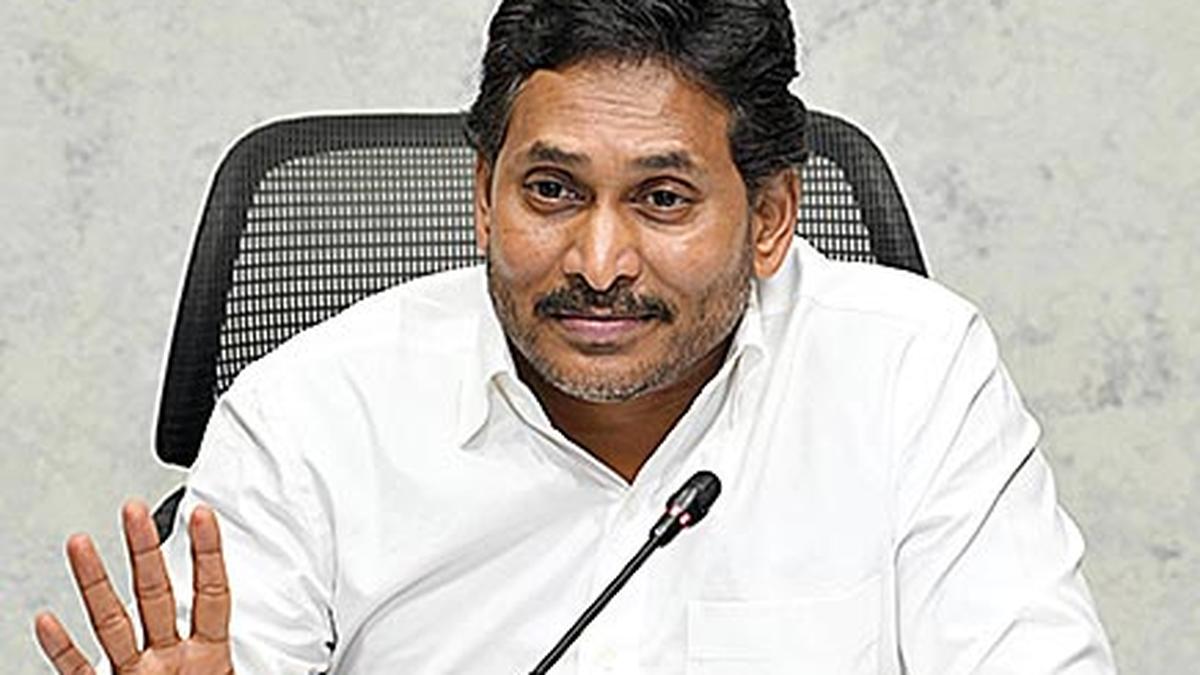Outside Shaheed Bhagat Singh International Airport, Chandigarh, spring’s exuberance is fast fading. Dust devils dance like dervishes across a golden brown land as the hotel car speeds towards Patiala, an hour-and-a-half away. The car manoeuvres a warren of streets, and swings past a massive wooden, iron-studded door into the Qila Mubarak complex. Beats from a dholak rise to a crescendo, and staff in shell-pink sherwanis hold a phulkari chadar for me to pass under. As if on cue, a shower of petals descends from the latticed balcony above.
A heavy door, with its green patina, swings open and Ran Baas The Palace reveals itself like an Andalusian dream — cupolas and arched corridors framing a sunken black-and-white tiled marble fountain. The heat feels like simmer coming to boil, but the fine mist from the fountain cools with the fragrance of a thousand roses.

The old Motibagh Palace that now houses the Netaji Subhas National Institute of Sports | Photo Credit: Deepa Alexander
The 10-acre Qila Mubarak began life as a mud fort when the Sidhu Jat clan under Baba Ala Singh founded the Patiala royal house in 1763. Later maharajas added the interior Qila Androon, the Darbar Hall and Ran Baas, the guest house. During the heyday of princely India, Patiala was more than just a town one discovers when you journey elsewhere. The maharajas of Patiala, especially the last two, Bhupinder Singh and Yadavindra Singh, were known for their appetite for the good life — sport (Bhupinder helped found the BCCI and gave the world the concept of the famed Patiala peg after winning a game of polo; father and son were presidents of the Indian Olympic Association), hunt, education, food and jewellery (the many-layered Cartier necklace was commissioned by them). Post-Independence, the complex fell into disrepair until the State Government decided to restore it. And that is where Apeejay Surrendra Park Hotels and well-known conservation architect Abha Narain Lambah stepped in.

A view of Ran Baas | Photo Credit: Special arrangement
The renovation story of Ran Baas The Palace, once the abode of queens, is told through hand-written postcards left on my pillow by the guest relations executive, Pragati Gambhir, a Mughal miniature-style map of the complex on the writing desk and atte de biscuit that Patiala’s bakeries have made since the Raj.
“Ran Baas has 25 suites with 10 more in the Gate Block,” says Deep Mohan Singh Arneja, general manager, as we sit for high tea on the terrace of what is arguably Punjab’s first luxury palace hotel. A sea of cupolas, some with finials, others without, stretches as far as the eye can see. A Cessna aircraft drones past the purple-pink sky as the lights accentuate the alcoves. “The Patiala Aviation Club was set up by Maharaja Bhupinder Singh for personal use,” says Arneja, adding: “His larger-than-life persona defined life in Patiala. We have tried to recapture that grandeur.” Arneja has been on site along with Abha’s team for nearly two years overseeing the palace’s transformation. Some of the walls and roofs had caved in and fortifying the masonry took its time.

The blue and white themed Heritage Suite | Photo Credit: Amit Pasricha
The past unravels in room after room with araish work, as Subhash Antony, executive housekeeper, walks me through the Sikh-Mughal-Rajput inspired complex. “Blue, teal, yellow and white dominate the rooms,” he says, showing the Heritage Suite, a spacious blue-and-white-themed room with parakeets in flight on the walls and windows that open to the Moulsari Garden. Chandeliers hang over the claw foot bathtub in the roomy bathroom. While this and the marble-bed Presidential Suite have a fair share of alcoves, the Shikarbagh and Naqqarkhana Suite have murals from another time that have been left untouched.

The Shikarbagh Suite | Photo Credit: Amit Pasricha
“No two rooms are the same. Jharokhas throw light from the outside during the day, at night it’s the chandeliers from Klove Studio, designed like ear drops that light up the palace,” says Subhash of the chandeliers that complement the stairwell with a de Gournay miniature. Portraits of the maharajas — mustachioed, handsome and bejewelled, murals featuring leopards, framed phulkaris, jamavars and massive bathtubs appear as constants across the property as we take the buggy down to the Jhalau Khana, a banquet hall beyond a row of ancient cannon that supposedly housed the Kohinoor before it was shipped off to Britain.

The food at Ranbaas | Photo Credit: Special arrangement
That evening, after a relaxing hour at the Aura spa, adjoining the swimming pool known as the Lassi Khana where once thousands were fed from the palace kitchens, dinner is a lamplit affair in the courtyard under the shade of the 200-year-old moulsari tree. The food is as luxurious as the rooms. “We have tweaked Patiala’s famed dishes, such as the chole bhature, so that it does not sit heavy,” says F&B manager, Aishwar Bhatia, although the palak patthe, a street-food classic with fried spinach leaves and yoghurt is a winner when paired with the Gulaabi Jaam cocktail (gin, lime, triple sec, Shiraz cabernet) made at the burgundy-midnight blue upholstered bar, The Patiala. The next morning’s meal at Neel, the all-day dining restaurant, and barbeque dinner by Chef Pratham Swaroop at the many-mirrored Sheesh Mahal are reminders of why Punjabi cuisine has gone global.

The Sheesh Mahal at Ranbaas | Photo Credit: Amit Pasricha
The itinerary for day two — taking in the sights of Patiala — has been decided for me by my assigned ‘butler’ Shaurya Kothari, a general management trainee. Shaurya has the efficiency of Downton Abbey’s Mr Carson with none of his stuffy demeanour. We cross over to the Darbar Hall within the complex with its long Belgian chandeliers almost grazing the floor, portraits of British kings and queens and a vitrine full of matchlocks. Men and women exercise in the early morning sun. We journey on to the Gurudwara Dukh Niwaran Sahib (remover of all obstacles) and the Netaji Subhas National Institute of Sports housed in the old Motibagh Palace. Among the treasures here are the 1983 Sunridges bat of Kapil Dev’s, Milkha Singh’s spikes from the Rome Olympics and the music record of the Delhi Asian Games.

The Nabha palace now under renovation | Photo Credit: Deepa Alexander
That evening we travel to Nabha, one among the Phulkian princely states, for high tea. Meet Gurudev Singh, assistant to Preeti Singh, granddaughter-in-law of the last king of Nabha regales us with Nabha’s place in the history of the Sikhs and its kings who rebelled against the Raj. The palace is undergoing a round of renovation and is styled like a many-tiered cake with beautiful wrought iron and woodwork under the eaves of which wedding shoots are on. Tea arrives from both the royal kitchen and the hotel’s picnic hamper and is served in crockery with the palace insignia in a viceregal drawing room with silver frames and ebony-tipped walking canes.
The market place in Patiala, outside the Qila doors, is where I buy yards of phulkari and boxes of pinni. When I return to the suite, a bubble bath has been drawn. Well rested I leave early, at dawn. In the distance, one can hear the azaan. As the car leaves the fort’s shadow, it is as if I have turned the page on a lamp-lit, horse-drawn age.
Rooms are priced ₹48,000 plus taxes upwards.
The writer was at Ran Baas the Palace at the invitation of The Park.
Published - June 06, 2025 04:59 pm IST



.png)
.png)
.png)
















 13 hours ago
5
13 hours ago
5








 English (US) ·
English (US) ·